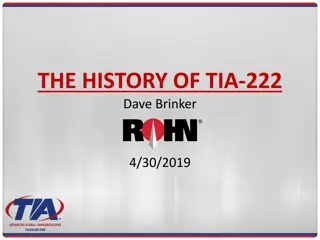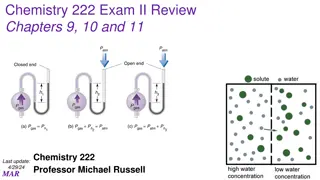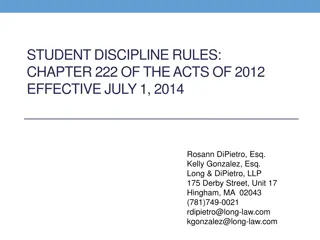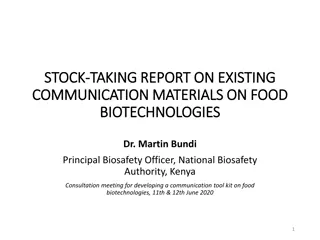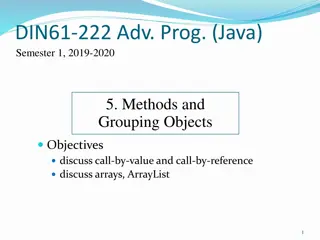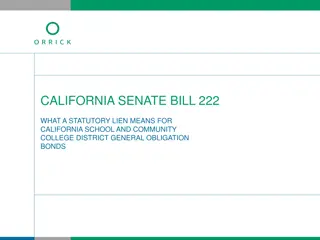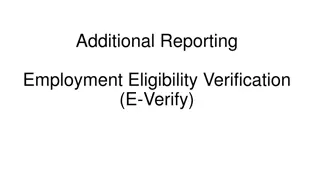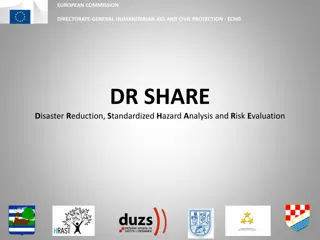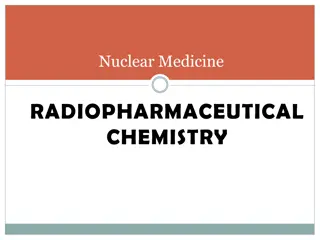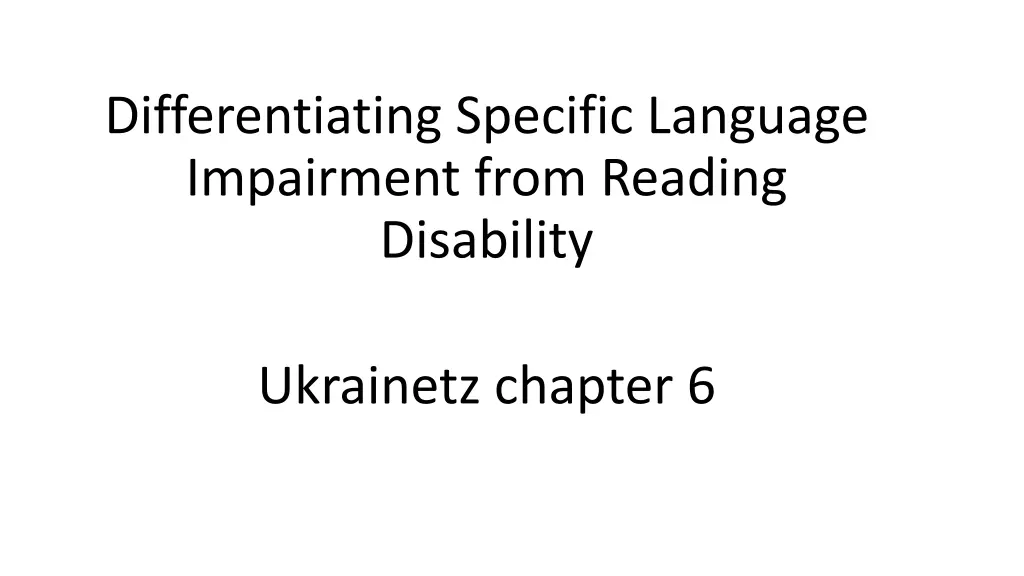
Differentiating Specific Language Impairment from Reading Disability
Explore the distinguishing factors between Specific Language Impairment and Reading Disability as discussed in this informative chapter. Additional references, developmental language disorder insights, and characteristics of SLI are also highlighted.
Download Presentation

Please find below an Image/Link to download the presentation.
The content on the website is provided AS IS for your information and personal use only. It may not be sold, licensed, or shared on other websites without obtaining consent from the author. If you encounter any issues during the download, it is possible that the publisher has removed the file from their server.
You are allowed to download the files provided on this website for personal or commercial use, subject to the condition that they are used lawfully. All files are the property of their respective owners.
The content on the website is provided AS IS for your information and personal use only. It may not be sold, licensed, or shared on other websites without obtaining consent from the author.
E N D
Presentation Transcript
Differentiating Specific Language Impairment from Reading Disability Ukrainetz chapter 6
Additional references used this semester include: Diehl, S.F. (2024). The development of literacy skills. In S. Levey (Ed.), Introduction to language development (3rded.). Plural Publishing. Fogle, P.T. (2023). Essentials of communication sciences and disorders (3rd ed.). Jones & Bartlett Learning. Westby, C. (2023). Disruptive behaviors and social communication disorder. In D.A. Hwa-Froelich (Ed.), Social communication development and disorders (pp. 304-344). Routledge.
And also: Roseberry-McKibbin, C., Hegde, G., & Tellis, G. (2024). An advanced review of speech-language pathology: Preparation for Praxis and comprehensive examination (6thed.). Pro-Ed.
Not on examASHA Leader, 12/23: Developmental language disorder (DLD) was top of mind for many speech-language pathologists in 2023 three of the Leader s most popular articles and podcasts in 2023 focused on different aspects of DLD In response to lobbying from ASHA members and staff, the U.S. Department of Education has clarified that DLD may be considered a disability under IDEA. SLPs can use this information to spread awareness of and access services for children with DLD.
Reading disabiity SSD Language Impairment Genetics
We will remember: ** 12 months of age: 1-2 words 18 months of age: 50 words and uses 2-word phrases 24 months of age: 200-300 expressive words, speaks mostly in phrases and short sentences
Lets scroll back the clock and look at when gestures should develop:** 9 months: give, shake head no 10 months: reach, raise arms 11 months: wave 12 months: point 13 months: clap 14 months: shhh 15 months: nods head yes
Children with DLD:** May have concomitant speech sound disorders (SSD) Even if they don t have frank SSD, they may have difficulty accurately producing polysyllabic words Pragmatics: greater passivity and social withdrawal, difficulty managing conversational turns
Children may manifest varying profiles:** SLI/DLD= difficulties with spoken language Reading disability= difficulties with written language Some children have both Some only have reading disability
III. READING DISABILITY (RD) A. Foundations of RD
From page 203:** This theory means that students with high IQs who are reading at only an average level may have dyslexia (although these students are not eligible for special education services). This is my son Mark! From personal experience, the Marks of the world get nothing
Most schools still use the discrepancy model to qualify students for services:
B. Simple View of Reading** Decoding/word recognition x language comprehension = reading comprehension
With reading disability, children may have difficulty with:
** Senter et al. (2023). Speech-language pathology interventions for children with executive function deficits: A systematic literature review. LSHSS, 54, 336-354. EF deficits often accompany DLD

